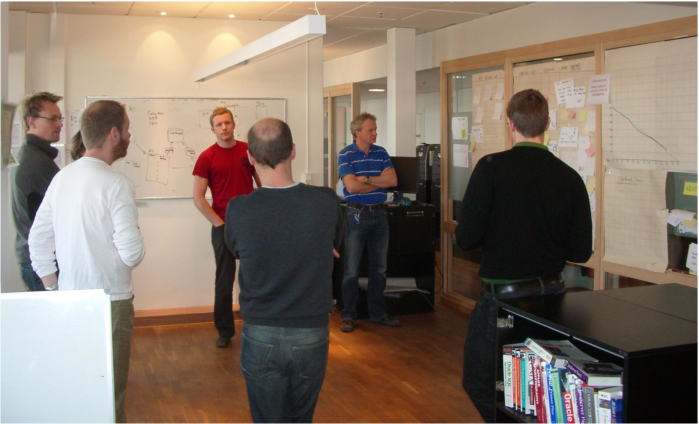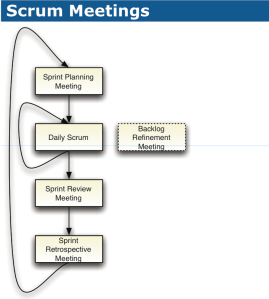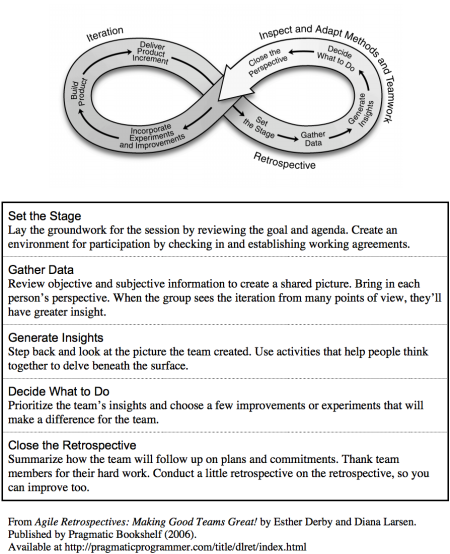Want to improve team performance? Want to create a dynamic team with interactions and emotions? Want to make your good team become a great team? Then Sprint Retrospectives are what you looking for. “When done well, Sprint Retrospectives are often the most beneficial ceremony a team practices.”(Starr,2013)

What is Sprint Retrospective?
The Sprint Retrospective is an opportunity for the team to reflect on what happened and to evaluate the work process in the sprint, so the team can identify strategies to improve on the next sprint. This also allows the team and product owner to improve their collaboration, and their work practice to get better at creating a great product.
Purpose of doing Sprint Retrospective meeting
The meeting takes place right at the end of the sprint after the sprint review meeting.

The purpose of the Sprint Retrospective is:
- To review the process of last Sprint included team environment, process, and tools.
- Identify the major items that went well and find out the potential improvements.
- Generate a action list for implementing improvements.
(Starr,2013)
Who organizes the meeting, How?
Like a normal meeting, we need a person who manages and leads the meeting, and Scrum Master is playing this important role. However, Scrum Master is a facilitator not a manager. His/her job is helping the Product Owner maximize productivity, also helping the team to organize the Sprint Retrospective meeting into an evolutionary, so Scrum Master should lead the meeting, not control. “As a retrospective facilitator, our primary responsibility is the process. Process means managing activities, managing group dynamics and managing time.”(Derby & Diana, 2007)
Manage Activities
The activities include in the Sprint Retrospective: prioritizing, brainstorming, building a timeline, and creating working agreements. These activities can improve the team interaction and make the team working together. “As a retrospective leader(Scrum Master) needs to introduce the activity, monitors the team environment during the activity, and debriefs the active when it is done.”(Derby & Diana, 2007)
Manage Group Dynamics
The retrospective leader has to make sure that everyone has the chance to talk about their perspective during meeting. The leader also needs to create opportunities for the quieter team members by making opening. For instance, “We haven’t heard John yet, what would you add to this problem?” “The retrospective leader need to remain neutral in discussions, even the team has strong opinions.”(Derby & Diana, 2007)
Manage Time
The Sprint Retrospective meeting is normally taking 1-3 hours depending on how much discussion is anticipated, so the retrospective leader need to keep track of time to organize the meeting time effective, and spending enough time on the important activity, also make sure that everyone has enough time to speak out their opinions to the project.
Before the Sprint Retrospective meeting is started, Scrum Master should remind the attendees that this meeting is for evaluation and improvement, and should ask them consider on three things: What went well? What did not work? What needs improvement? Scrum Master makes sure that the team comes up with the action items at the end of meeting, such as what to start doing, what to stop doing, and what to continue doing. Sometime good Scrum Master is not only helping the team, but also making the good team to be a great team.
How I apply this strategy into my project?
After gathering the feedback for the product owner, I would like to write a small general report and send to every members let them take a look first before coming to the meeting. First of all, they can have more time to think about what they did wrong, how they can improve for the next sprint. Then during the meeting, I would briefly talk about the feedbacks and the expectation from the product owner and clients. I would like to go through to specific tasks and explain how it different from client’s expectation, and ask for solution to improve.
In conclusion, the Sprint Retrospectives meetings provide the visibility regarding achievement of sprint goals. At the end of Sprint Retrospective, the team can improve work processes and avoid recurrence for the project.
Peer reviewed primary research:Drummond, B., & Unson, J. F. (2008, August). Yahoo! Distributed Agile: Notes from the world over. In Agile, 2008. AGILE’08. Conference (pp. 315-321). IEEE.
Peer reviewed secondary research: McHugh, O., Conboy, K., & Lang, M. (2012). Agile practices: The impact on trust in software project teams. Software, IEEE, 29(3), 71-76.
Other References:
James, M. (2010). Scrum Reference Card. Retrieved September 28, 2014, from http://scrumreferencecard.com/scrum-reference-card/
Starr, D. (2012). Effective Sprint Retrospectives. Retrieved September 28, 2014, from http://msdn.microsoft.com/en-us/library/jj620912.aspx
Derby, E., & Diana, D. (2006). Chapter 3:Leading Retrospectives. In Agile retrospectives: Making good teams great. Raleigh, NC: Pragmatic Bookshelf.
Kniberg, H. (2006). Scrum and XP from the Trenches. How we do Scrum.
At the first glance, it is a beautiful blog, but when I look careful, it is a great blog. At the beginning of the blog, the author raises a series of questions to attract my attention. The organization of the blog is good. It answers the questions one by one and leads me deep into the content. It shows what the important parts in the sprint retrospective meeting. In addition, the figures are very helpful to explain the idea of the content. Totally, it is a good blog.
LikeLike